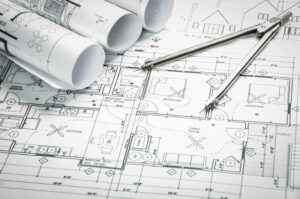
So fundamentally, it’s obvious creating a good floor plan is critical. But what is good? This is (think beauty and those beholder’s eyes) very individual. A plethora of criteria should be taken into consideration before your plans are finalized. Perhaps the most important detail is the number and types of rooms you desire, and for this one needs to be a bit prescient. Conceive of not only current family members, but potential ones, and ones who may leave, as well as guests, babies, pets and privacy. Also, whether one floor or two (or more!) is practical for you now, and as you and your family ages.
The usage of each room throughout your home should determine its size and positioning. If you have heirlooms, large furnishings or musical instruments that are to be part of the decor, prioritize these dimensions when determining the proportions of the layout. But the dimensions of your home are not only horizontal: the height of your home is also variable, and so many people think they desire elevated ceilings for that lofty, airy vibe. Remember that those altitudinous canopies can be really difficult when you need to change an embedded lightbulb that goes out the moment company is arriving. And unless you have a cleaning crew with extension ladders, dust settles on those out-of-reach ceiling fans, and web-weaving spiders so not share the same fear of heights as most humans do.
All the considerations addressed so far revolve around the layout of the guts of your home, but attention needs also focus on the exterior: which rooms and and what time of day you want (or don’t) sun exposure- something you CANNOT change once your home is built. This can massively effect your heating and cooling bill, too, so take into consideration the trajectory of the sun and window placement. Those rays can easily heat to leather on your Lazyboy to scalding right when you were planning to watch those PGA finals, or just blind you with their glare at inopportune times of day. Consider as well shade trees and/or any adjacent buildings or geographic configurations that might impede your light, or obscure an otherwise scenic view.
Aside from implementing an aesthetically pleasing flow to the layout of your home, a great floor plan can also boost resale value. It’s also a really fun part of home planning, and a way to showcase your design scheme and creative flair. Just make sure you work in coordination with your trusted architect in order to assure the layout is as ideal in practice as it is in theory.

